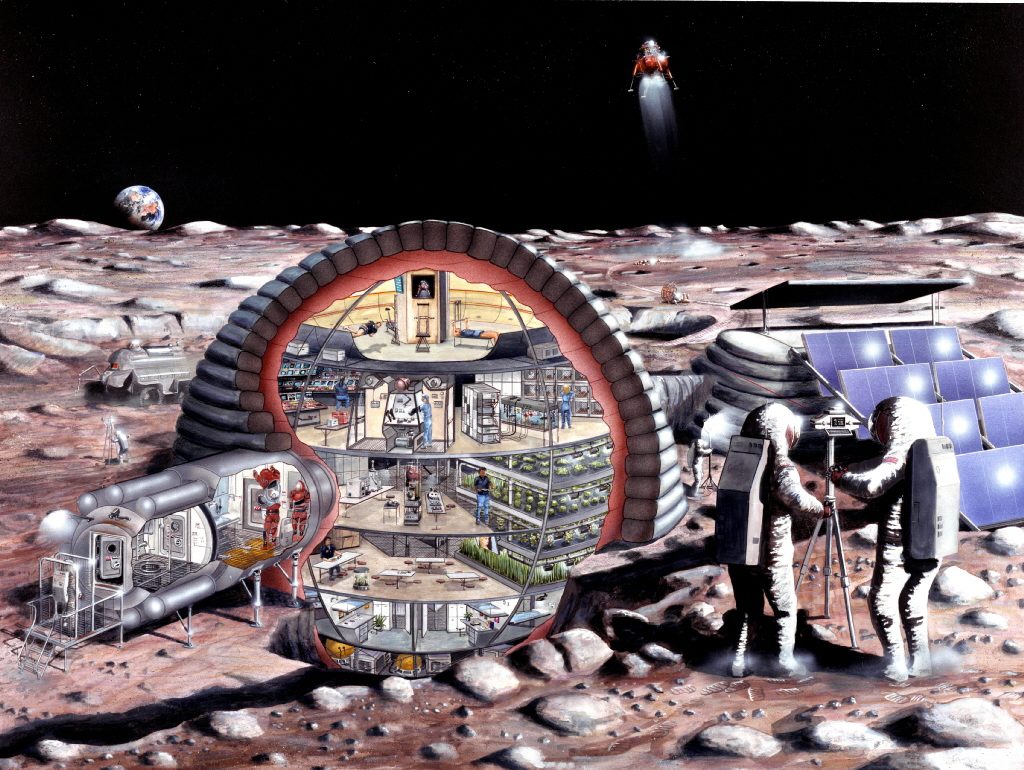A summary of the lunar environment is provided as background to the issues that await resolution by structural engineers who will design habitats for long-term stays on the Moon, initially by pioneering astronauts, and eventually by people who will call the Moon their home.
Key environmental concerns are the radiation and micrometeoroid environment, the hard vacuum, and the lack of atmosphere. The lunar dust poses a carcinogenic hazard, as well as an existential threat to engineered systems. Structures need to be designed with an eye to the psychological wellbeing of the inhabitants.
This presentation provides an introduction into:
• the recent history of lunar habitat concepts,
• the space and lunar environment,
• physiological and psychological challenges,
• the economics of lunar habitats
• some lunar habitat designs, and
• a sample design concept.
A 16 m diameter inflatable habitat is depicted and could accommodate the needs of a dozen astronauts living and working on the surface of the Moon. Depicted are astronauts exercising, a base operations center, a pressurized lunar rover, a small clean room, a fully equipped life sciences lab, a lunar lander, selenological work, hydroponic gardens, a wardroom, private crew quarters, dust-removing devices for lunar surface work, and an airlock. The top level shows joggers required to run with their bodies almost parallel to the floor as a result of the low gravity. This artist’s concept reflects the evaluation and study at Johnson Space Center by the Man Systems Division and Johnson Engineering personnel. S89-20084, July 1989. (Courtesy G. Kitmacher, NASA)











